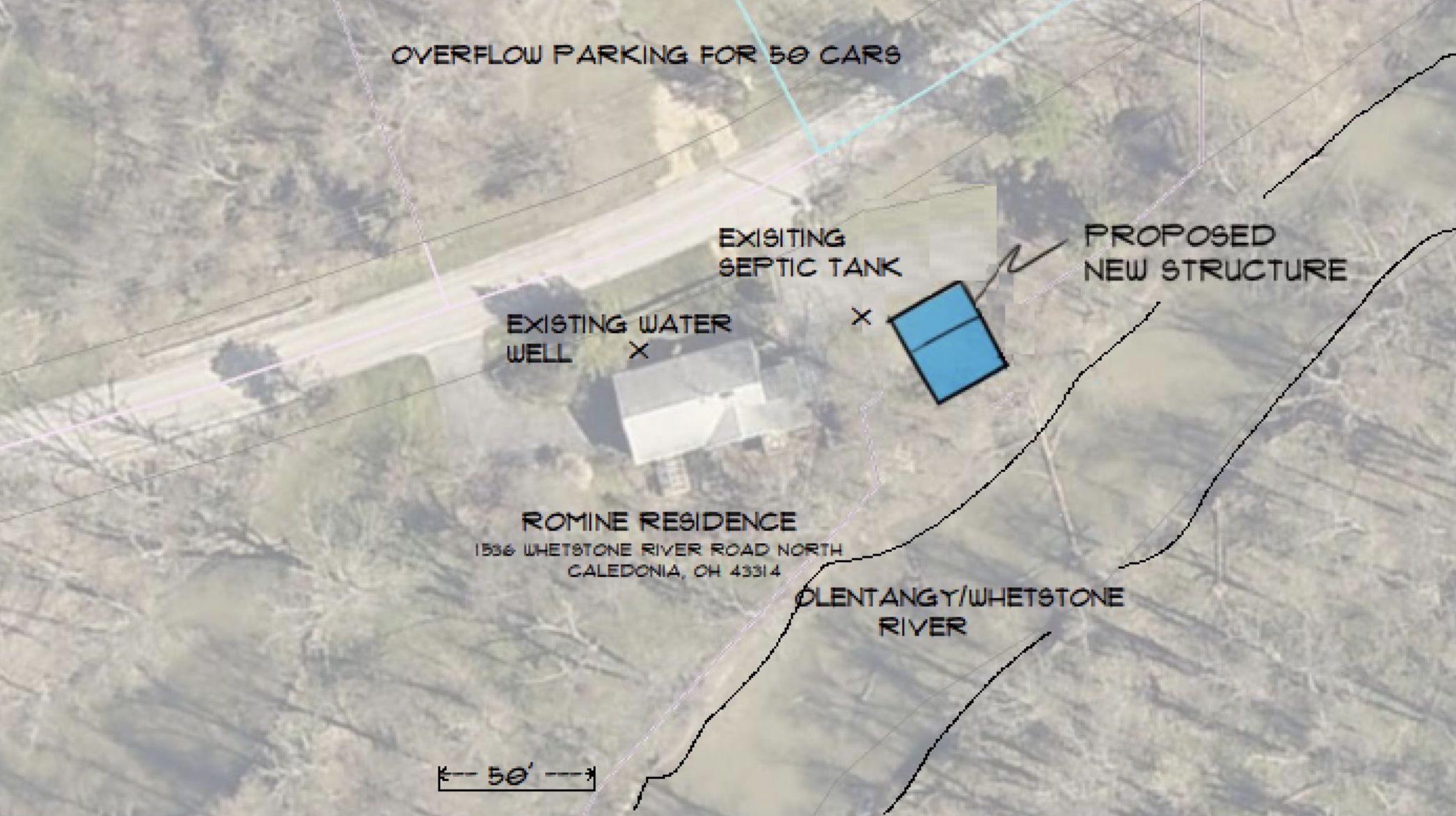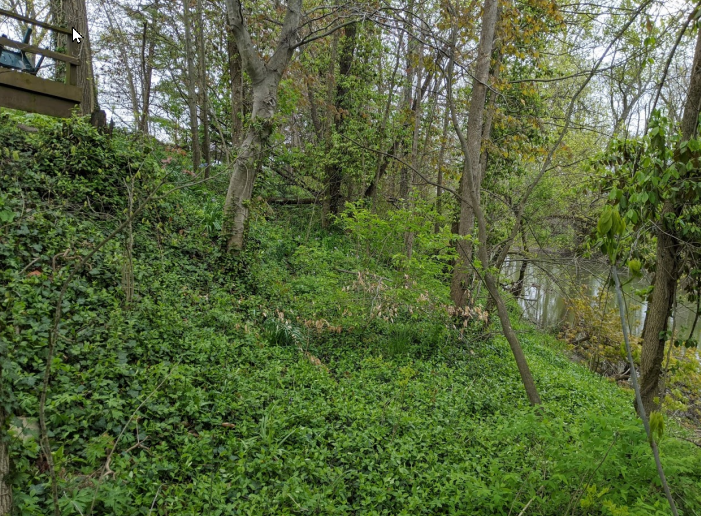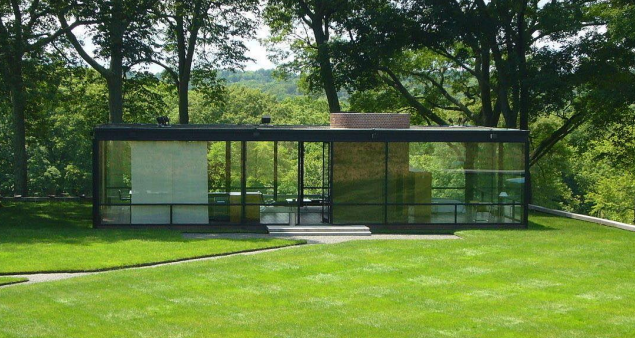Purpose
To provide a place of focus for the public to learn about the natural and cultural history of the Olentangy River and of Terradise, the 18-acre plot of Olentangy/Whetstone River bottomland. Permanent and temporary displays will tell the story of the river and Terradise. Exhibits showing the natural flora and fauna as well as the unique riverine habitat will be on permanent display. Temporary displays such as art produced by the Terradise Environmental Arts Residency Grants, local artists and naturalists, and other relevant materials will be welcomed. The Interpretive Center will serve as a gathering point for visitors to both sides of the river (The Marion County Parks’ Terradise Nature Preserve and the Terradise Nature Center).

Background
Terradise was purchased from Marie Thomas in 1952 and the Trella and Ray Romine residence was built in 1953. Ray was a poet and coined the term “Terradise” as “Heaven on Earth” (Terra + Paradise). Sheep had grazed the site, but the native plants soon recovered and now over 80 species can be found, including some which are rare or endangered. Fauna include beaver, otter, deer, raccoon, squirrel, voles, chipmunks, various salamanders, fish, and amphibians. Bird lists have included over 50 species over the years. Great Blue Herons and Bald Eagles regularly fish the river.
While Trella Romine lived in her home (1953-2013), Terradise hosted many club meetings, garden club tours, and events, and encouraged visits for fishing and hiking. Since the Nature Center was formed in 2018, annual visitation has risen every year and we now see over a thousand visitors per year, including those who choose to stay at the Romine residence for overnight visits. In addition, events such as the Terradise Environmental Arts programs and the Tunes at Terradise Concert Series have attracted broader participation in experiencing Terradise. We expect the Interpretive Center to be a destination site, with the unique architecture attracting many new visitors, even in inclement weather.
The 18 acres of Terradise and the two acres across Whetstone River Road boast three habitats: prairie, woodland, and wetland/floodplain. The area was designated an Ohio Natural Landmark by the Ohio Department of Natural Resources and serves as a recreational facility for the village of Caledonia and Marion and Morrow Counties. The Jr. River Patrol Landing provides river access for kayaks and canoes, with ample parking. Having an interpretive center will allow our exhibits to be viewed year-round in a climate-controlled environment, with easy access on a level entrance from the parking lot.
The Building
To be built overlooking the river, with a cantilevered deck for gathering and contemplation, the design will feature a Frank Lloyd Wright-inspired design, using glass and stone to complement the setting—dimensions of 30 ’x 30, single story with geothermal heating and cooling and a unisex restroom.

Location
The Interpretive Center will be located just east of the existing Trella Romine home at 1536 Whetstone River Road North, Caledonia, OH 43314 with easy access from the existing parking lot and a school bus drop off area:


Inspiration
Because of the desire for low impact on the area, the design will incorporate principles of Wright’s buildings – use of natural and recycled materials, glass for lighting, and visibility of the surrounding area. Philip Johnson’s glass house also serves as an inspiration and shows how glass can allow the building to “view” the scenery even from the outside.

Materials*
A concrete foundation roughly 30’ x 30’ will provide an interior space. The interior will be divided with a single unisex restroom and a storage/utility area along the east or west wall.
A cantilevered deck on the south (river) side. will provide a meeting place and river view.
The east or west walls will be of Marion County limestone slabs to a height of 2’ with glass above to meet the slanted roof. These will provide the outside sheathing for the restroom/utility room.
The remainder of the walls will be triple-pane safety glass with bird strike prevention.
The roof will be slanted toward the road to allow full exposure of the south glass wall for solar heating in the winter.
On the east side, a small garden will display native species and lead to a trail underneath the cantilevered deck. On the west side, a pathway/steps will connect the existing “Beech Deck” between the Romine home and the proposed interpretive center.
Electrical service will be provided with new service dedicated to the Interpretive Center and shed.
The existing Aqua Ohio water line can be extended to the Interpretive Center from Romine House.
Naming
If a large donor does not claim naming rights, the proposed name of the Interpretive Center would be The Romine Olentangy Interpretive Center.
Timeline*
2023 Architects Renderings and Cost Estimates.
2024 Secure Funding, Bids Accepted.
2025 Construction to begin in Spring dependent on funding. Completion by Fall 2025.
More Information
Please use our contact form to reach out for more information.
*Terradise Nature Center understands that the ideas and estimations presented here are very preliminary and are contingent on the actual process involved with planning and building the structure.

